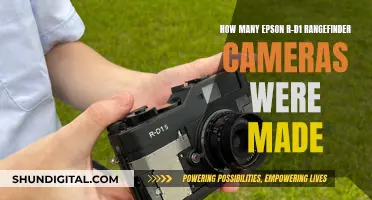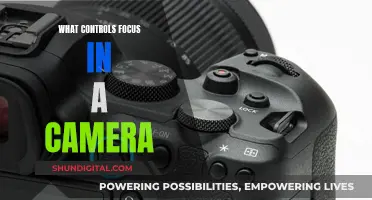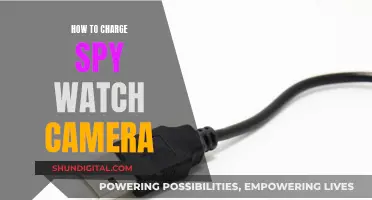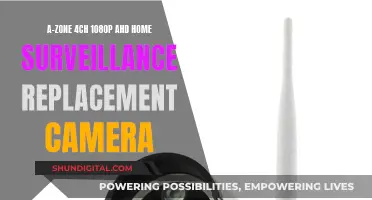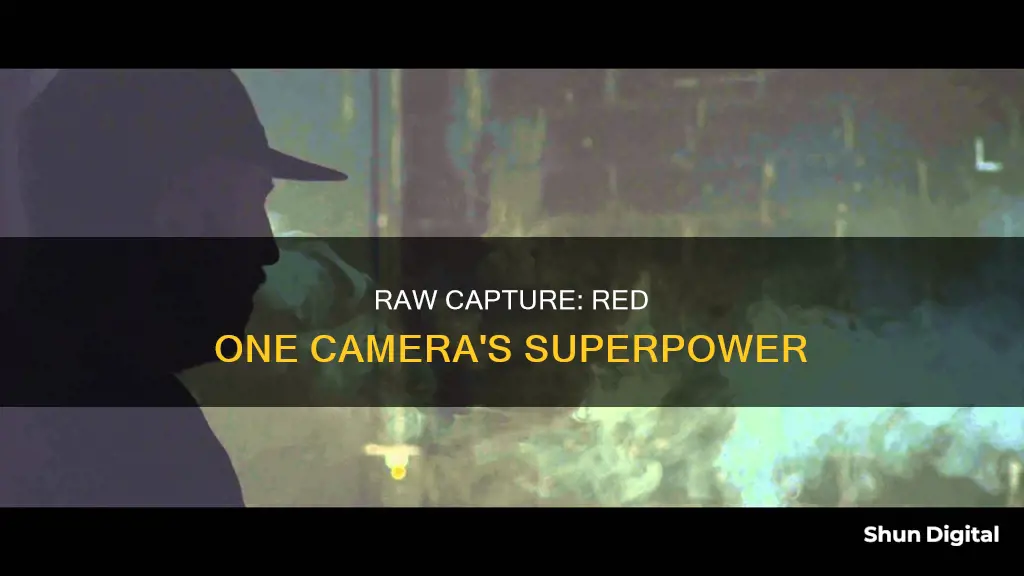
The Red One camera, introduced in 2007, is a powerful video camera that offers Ultra HD resolution, with over 4,000 horizontal scan lines. One of its key features is its ability to record in RAW format, providing maximum image fidelity and flexibility in post-production. This means that the camera captures uncompressed and unprocessed data, similar to digital still cameras, resulting in extremely high-quality images. The RAW format also allows for non-destructive editing and stores the original material without modification, making grading fully reversible. Additionally, Red One offers variable frame rates, slow-motion capabilities, and a selectable aspect ratio, making it a versatile choice for filmmakers.
What You'll Learn
- The Red One camera captures footage in RAW, which is uncompressed and unprocessed
- The Red One camera was introduced by Red Digital Cinema in 2007
- The Red One camera has a resolution of 4,096 lines, whereas the next best video camera has a maximum resolution of 1,080 lines
- The Red One camera has a cast aluminium body and weighs 10 pounds
- The Red One camera offers the option to record using 4K, 3K, or 2K lines of resolution

The Red One camera captures footage in RAW, which is uncompressed and unprocessed
The Red One camera's ability to capture footage in RAW was a significant advantage when it was introduced in 2007. At the time, other cameras used formats and recording codecs that involved compression and colour subsampling, which degraded the image quality. With the Red One camera, filmmakers could capture footage with the highest resolution available in the market, at 4,096 horizontal scan lines, known as 4K technology.
The RAW format also provided greater flexibility in post-production. Since the raw data included all the information captured by the camera's 12-megapixel sensor, adjustments such as white balance and gain could be made after shooting during post-production. This gave filmmakers more control over the final look of their footage.
In addition to its superior image quality and flexibility, the Red One camera offered all of this at a lower price point than its competitors. The camera body initially cost $17,500, while the cheapest HD camera of similar calibre was $65,000. This combination of high-quality footage, flexibility in post-production, and affordable price made the Red One camera a game-changer in the film and video industry, challenging established brands like Sony, Panasonic, and Canon.
Today, RED cameras continue to be a leader in the market, offering top-notch technology and great-looking images. With their high-resolution sensors, outstanding dynamic range, and ability to shoot in RAW, RED cameras have set the standard for digital cinema cameras.
Charging Polaroid Snap Cameras: A Quick Guide
You may want to see also

The Red One camera was introduced by Red Digital Cinema in 2007
Red Digital Cinema, LLC is an American camera manufacturer specialising in digital cinematography. The company was founded by Jim Jannard, a self-described "camera fanatic" who previously founded Oakley. Jannard's goal was to create an affordable 4K digital cinema camera after facing difficulties with his own Sony HDR-FX1 video camera. At the 2006 NAB Show, Jannard announced that Red would be building the Red One camera and started taking pre-orders.
In March 2007, director Peter Jackson tested two prototype Red One cameras, creating the 12-minute World War I film "Crossing the Line". This led to director Steven Soderbergh using two prototype Red One cameras to shoot his film "Che". The Red One camera first shipped in August 2007 and was soon used in productions such as the medical drama "ER".
The Red One camera offered a significant leap in technology, with a resolution of 4,096 lines compared to the maximum resolution of 1,080 lines offered by competing cameras at the time. It gave filmmakers the option to record using 4K, 3K, or 2K lines of resolution, with the ability to scale down to lower HD resolutions in post-production. The camera recorded in RAW format, capturing uncompressed and unprocessed data with each frame containing as much information as a digital still photograph.
The introduction of the Red One camera had a significant impact on the industry, with Red Digital Cinema widely credited for accelerating the transition from analog to digital cinematography.
Charging Button Cameras: A Step-by-Step Guide
You may want to see also

The Red One camera has a resolution of 4,096 lines, whereas the next best video camera has a maximum resolution of 1,080 lines
The Red One camera is a powerful video camera with an impressive resolution of 4,096 lines, or over 4,000 horizontal scan lines, which is where the term 4K technology comes from. This is a significant leap in technology, as the next best video camera on the market has a maximum resolution of only 1,080 lines.
The Red One camera's image quality is comparable to 65mm, while footage shot in 35mm is transferred to video for digital post-production, resulting in a lower-quality image by the time it is projected in theatres. The Red One camera also offers the option to record in 4K, 3K, or 2K lines of resolution, while the next best HD camera only offers 1K recording.
The Red One camera's high resolution is achieved through the use of a large CMOS image sensor, which measures 12 megapixels and is 24.4mm x 13.7mm in size. This sensor, known as the "Mysterium", is proprietary to Red Digital Cinema, the designer of the camera. The sensor uses a single path through the camera, resulting in a simpler and more streamlined design compared to conventional video cameras, which use three CCD chips and corresponding channels for red, green, and blue signals.
The Red One camera's high resolution, combined with its low price (the camera body initially cost $17,500, while the cheapest HD camera of this calibre was $65,000), made it a highly sought-after product in the industry. The camera was back-ordered for over a year, and new owners praised its quality and performance.
In addition to its high resolution, the Red One camera also offers the advantage of recording in RAW format, which is uncompressed and unprocessed. This means that each frame contains as much information as a digital still photograph, resulting in superior image quality and flexibility in post-production. The RAW format also allows for non-destructive editing, giving users the ability to make adjustments to white balance, gain, and exposure after the fact without losing any data.
Overall, the Red One camera's resolution of 4,096 lines is a significant advancement in video camera technology, offering superior image quality, flexibility, and performance compared to its competitors.
Starlink's Camera: Tesla's Battery Power Source?
You may want to see also

The Red One camera has a cast aluminium body and weighs 10 pounds
The Red One camera is a powerful video camera that utilizes a cast aluminium body and weighs 10 pounds. Its body is constructed without any plastic, instead using aluminium alloy, giving it a sturdy and durable feel. The camera measures 12 inches in length and 6 inches in height, with interchangeable lens mounts for versatility in different shooting scenarios.
The Red One camera is known for its high-quality images, offering a resolution of over 4,000 horizontal scan lines, referred to as 4K technology. This sets it apart from other HD cameras on the market, which typically offer a maximum resolution of 1,080 lines. With its 4K sensor, the Red One provides an impressive dynamic range of up to 13 stops, allowing editors, colorists, and VFX artists to work with large, flexible palettes.
One of the key advantages of the Red One camera is its ability to record in RAW format. This means that the camera captures uncompressed and unprocessed data, providing maximum image fidelity and flexibility in post-production. Each frame contains as much information as a digital still photograph, allowing for extensive manipulation without sacrificing image quality.
The Red One camera is also notable for its interchangeable lens mounts, making it easy to prep for specific shoot requirements. Additionally, its continuous firmware updates ensure that the device remains versatile and up-to-date with the latest features and improvements.
The Red One camera has played a significant role in changing the landscape of digital cinema. Introduced as a digital alternative to 35mm film, it has been used in the production of acclaimed films such as "Che" and "The Social Network." Its ability to capture 4K images with exceptional quality has solidified its position as a trusted camera for film productions and high-fashion photo shoots.
The Red One camera's cast aluminium body and 10-pound weight contribute to its durability and stability, making it a reliable choice for filmmakers and photographers alike.
Charging Your GE X600 Camera: A Quick Guide
You may want to see also

The Red One camera offers the option to record using 4K, 3K, or 2K lines of resolution
The ability to record in 4K provides several benefits. Firstly, it offers unmatched image quality, surpassing even 35mm film in terms of resolution. Secondly, it provides flexibility in post-production, allowing users to scale down the footage to lower resolutions if needed. Additionally, 4K recordings utilise the full surface area of the sensor, while 3K and 2K recordings use windowed areas.
However, there are also advantages to shooting in 3K and 2K. These lower resolutions allow for higher frame rates and longer recording times. For example, the Red One camera can capture up to 120 frames per second at 2K resolution and 60 frames per second at 4K resolution. Therefore, users can choose the resolution that best suits their specific needs and creative vision.
The Red One camera's ability to offer multiple resolution options gives filmmakers greater flexibility and control over their images, making it a powerful tool for creative professionals.
Best Cameras Compatible with the AZ16-1 Battery
You may want to see also
Frequently asked questions
Yes, the Red One camera shoots in RAW.
Shooting in RAW maximises image fidelity and post-production flexibility. It also allows for non-destructive editing and stores the original material without modifying or requiring a duplicate copy.
Shooting in ProRes results in larger file sizes than shooting in RAW. Shooting in ProRes also means giving up some control over the final look of the footage, as the 'look' of the footage is baked in.
ARRIRAW files tend to be much larger than RED RAW files. For example, a 15-second 6K RED RAW file (1.3GB) is nearly 20% smaller than a 4K ARRIRAW file.
Shooting in ProRes 4444XQ results in larger file sizes than shooting in RED RAW. For example, over 180 minutes of footage shot in RED RAW 6K with a 2K 422LT proxy is smaller than ARRI 2.8K 4444XQ ProRes footage.


